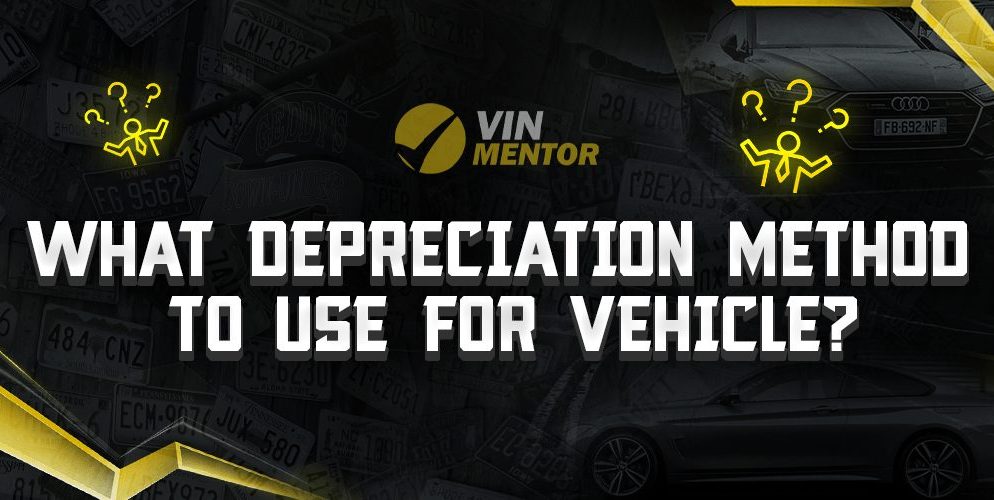

Determining the most suitable depreciation method for a vehicle is an essential consideration for both individuals and businesses alike. The right method can have a significant impact on financial statements, tax obligations, and overall asset management. In this article, we will delve into the various depreciation methods available and explore the key factors to consider when deciding which method to use. Read on to gain valuable insights that will help you make an informed decision.
Key Takeaways
- It’s important to learn about the concept of depreciation and its importance in accounting for vehicle value.
- You should familiarize yourself with the various depreciation methods commonly used for vehicles.
- Evaluate the key factors that influence the choice of a depreciation method for your specific situation.
- Consider the financial and tax implications associated with each depreciation method.
- Seek guidance from accounting professionals to ensure accurate depreciation calculations and compliance.
Depreciation Methods for Vehicles
When considering depreciation methods for vehicles, it’s important to note that a VIN check can complement the evaluation process by providing valuable information about the vehicle’s history and condition. Here’s a breakdown of the depreciation methods and how a VIN check can enhance the decision-making process:
Straight-Line Method
- Exploring the simplicity and consistency of the straight-line method.
- Understanding how this method allocates equal depreciation amounts over the useful life of the vehicle.
- Evaluating its benefits for financial statement reporting and tax purposes.
- Use a VIN check to verify the vehicle’s history, ownership, and maintenance records, providing additional confidence in the depreciation calculations.
Declining Balance Method
- Delving into the accelerated nature of the declining balance method.
- Understanding how this method allocates higher depreciation amounts in the earlier years.
- Exploring its advantages in reflecting the higher rate of depreciation during the initial years of vehicle ownership.
- Combine the depreciation calculations with a VIN check to uncover any potential issues or repairs that may affect the vehicle’s value and depreciation rate.
Units of Production Method
- Exploring the unique approach of the units of production method.
- Understanding how this method bases depreciation on the vehicle’s usage or production output.
- Evaluating its suitability for businesses with vehicles that experience varying levels of usage.
- Use a VIN check to assess the vehicle’s mileage, usage patterns, and potential wear and tear, ensuring accurate depreciation calculations.
Combination or Hybrid Methods
- Understanding the possibility of using a combination of different depreciation methods.
- Exploring the benefits of tailoring the depreciation approach to match the specific characteristics of the vehicle.
- Evaluating the complexities and considerations involved in implementing hybrid methods.
- Support the decision-making process by using a VIN check to gather comprehensive information about the vehicle’s condition, maintenance history, and potential repairs, ensuring the accuracy of the combined depreciation approach.
By incorporating a VIN check into the evaluation of depreciation methods, you can have a more comprehensive understanding of the vehicle’s background and condition. This information can contribute to more accurate depreciation calculations and assist in making informed decisions that align with your financial goals and objectives.
Factors to Consider When Choosing a Depreciation Method
- Vehicle Usage and Mileage: Consider the anticipated usage patterns and mileage of the vehicle over its useful life.
- Industry Standards: Evaluate industry practices and standards regarding depreciation methods for similar vehicles.
- Financial Reporting Needs: Determine the importance of financial statement accuracy and compliance with accounting standards.
- Tax Considerations: Understand the tax regulations and implications associated with each depreciation method.
- Long-Term Asset Management: Assess the impact of depreciation methods on overall asset management and strategic decision-making.
Conclusion
Choosing the most appropriate depreciation method for a vehicle is a crucial decision that can significantly impact financial reporting, tax obligations, and asset management. By understanding the various depreciation methods available and considering factors such as vehicle usage, industry standards, financial reporting needs, tax considerations, and long-term asset management, you can make an informed choice. Remember, consulting accounting professionals can provide valuable insights and ensure accurate depreciation calculations. Additionally, consider performing a VIN check to gather comprehensive information about a vehicle’s history and condition. Choose from our recommended list of best VIN Check Websites to aid in your decision-making process.
FAQ
What is the purpose of using a VIN check when deciding on a depreciation method for a vehicle?
A VIN check provides valuable information about a vehicle’s history, ownership, maintenance records, mileage, and potential issues or repairs. When considering depreciation methods, a VIN check can enhance the decision-making process by ensuring accurate depreciation calculations and providing confidence in the vehicle’s value and depreciation rate.
How does the straight-line depreciation method work, and what are its benefits?
The straight-line method allocates equal depreciation amounts over the useful life of the vehicle. It offers simplicity and consistency for financial statement reporting and tax purposes. By using this method, the depreciation expense remains the same each year, making it easier to track and budget for vehicle depreciation.
What is the declining balance depreciation method, and what advantages does it offer?
The declining balance method is an accelerated depreciation method that allocates higher depreciation amounts in the earlier years of vehicle ownership. It reflects the higher rate of depreciation during the initial years when a vehicle typically experiences the most value loss. This method allows businesses to more accurately match depreciation expenses with the vehicle’s actual decline in value.
How does the units of production method differ from other depreciation methods?
The units of production method bases depreciation on the vehicle’s usage or production output. Instead of allocating depreciation based on time or years, it considers the vehicle’s actual utilization. This method is particularly suitable for businesses with vehicles that experience varying levels of usage. It provides a more accurate representation of the vehicle’s depreciation based on its actual workload.
Can a combination or hybrid method be used for depreciation, and what are the considerations involved?
Yes, a combination or hybrid method can be used for depreciation by tailoring the approach to match the specific characteristics of the vehicle. This method allows for a more customized depreciation calculation that considers different factors. However, implementing a combination method can be more complex, as it requires careful consideration of the appropriate allocation percentages for each method. Consulting accounting professionals and using a VIN check can help ensure accurate calculations when utilizing a hybrid depreciation approach.












